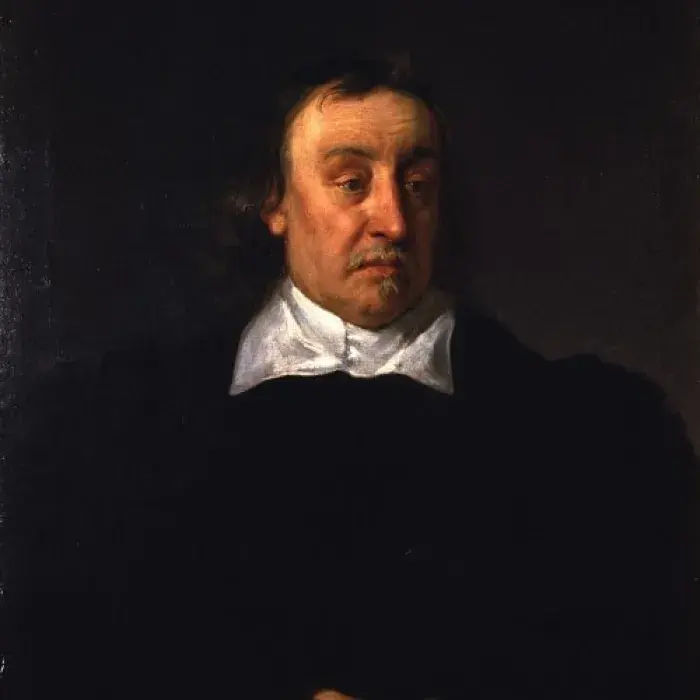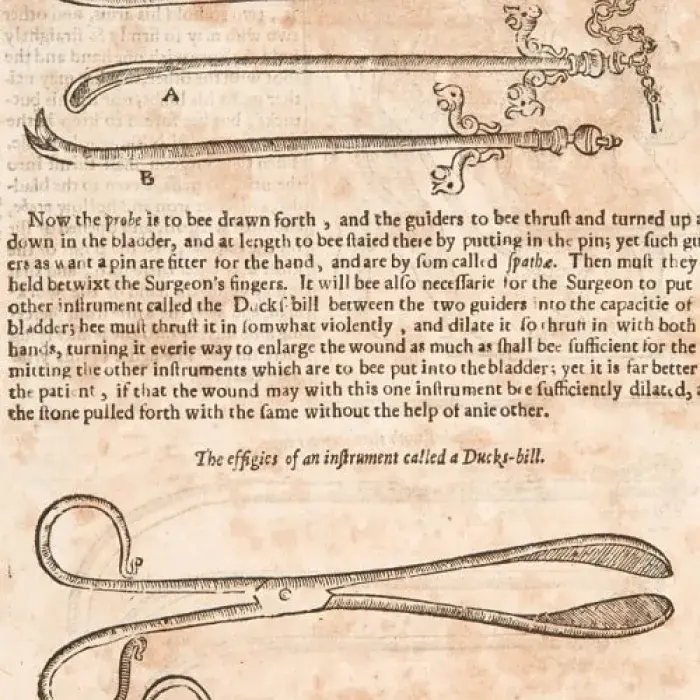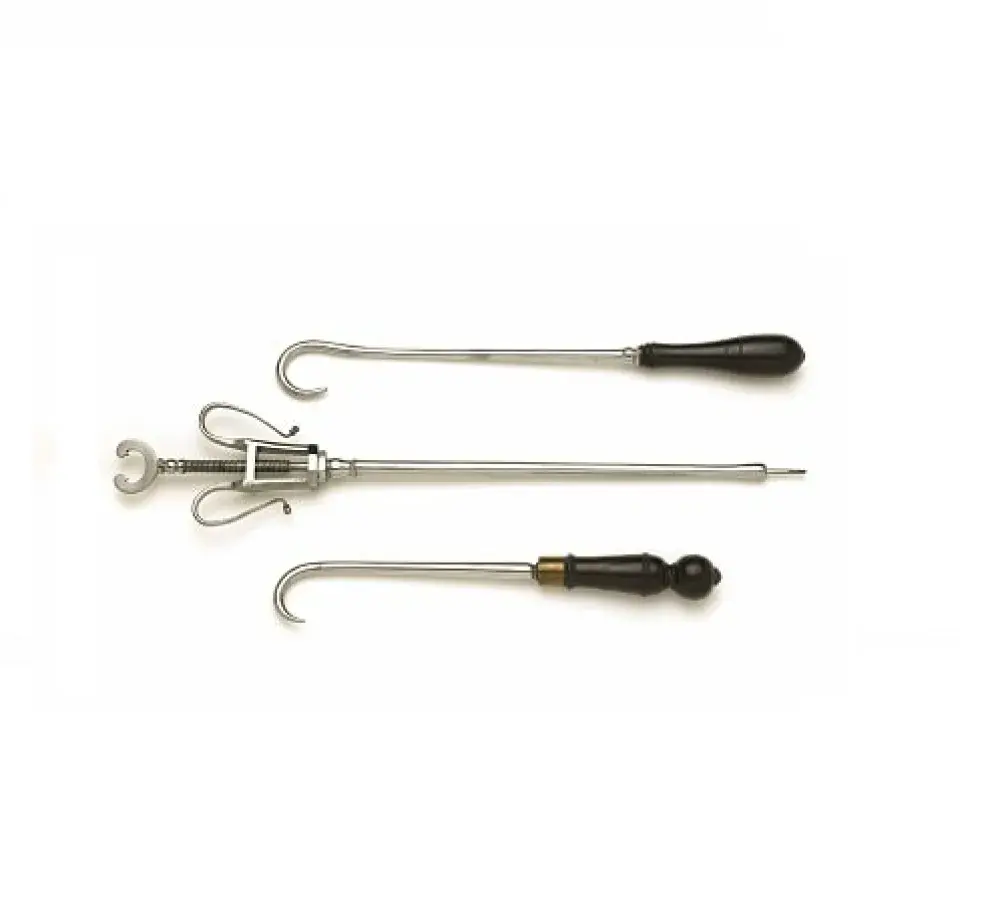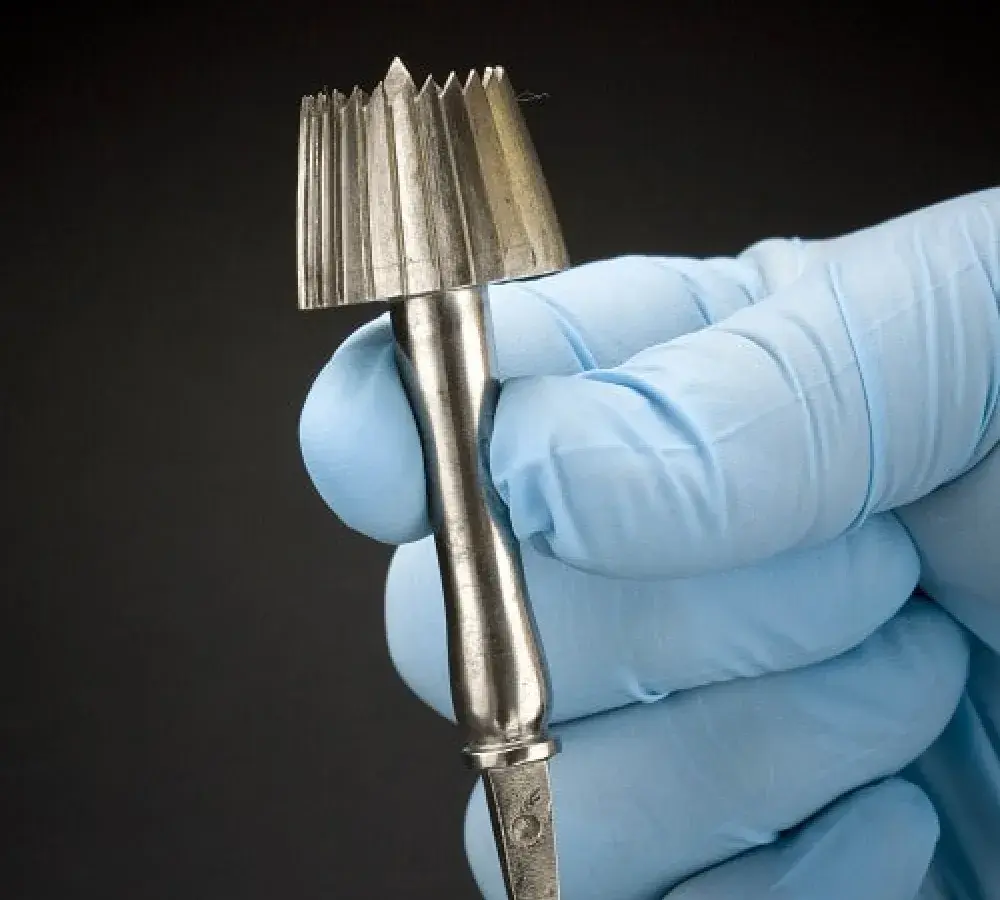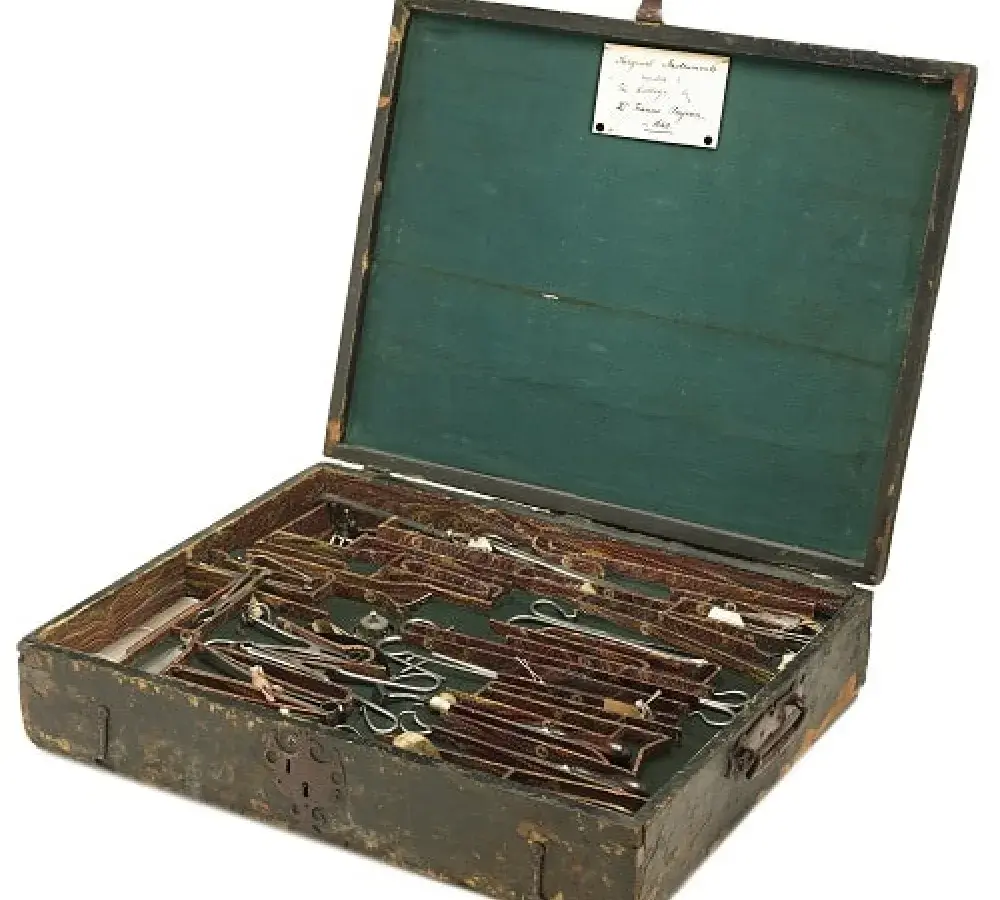Related pages
We fill'd up the cavity with dossils of lint
How do you dress a gun-shot wound? Surgeons a few hundred years ago were faced with this medical task – without the knowledge and equipment we have today. They were often involved in highly charged and dangerous situations on the battlefield, where the wounds themselves were as messy as their operating rooms.
Beth Wilkey
The precious storehouse of the chirurgeon
Discover the gruesome history of one the RCP museum's star objects, the Prujean Chest.
A hole in the head
The RCP’s Treasures Room has a new display showcasing a rare and rather gruesome array of surgical gadgets dating from the 17th century.
Sarah Backhouse

